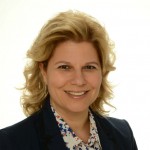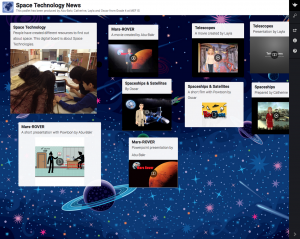
Ufuk Yagci is the Educational Technology Coordinator at MEF International School in Istanbul, Turkey
This is the first of a two-part article which illustrates how a PYP school in Turkey piloted a one-to-one BYOD (bring your own device) using iPads in upper elementary.
Teaching with technology can deepen student learning, yet it can be challenging for teachers – with the danger of replacing current materials with expensive tools, without adding extra value. That is why each school should define the purpose and scope of the usage of technology before implementing them.
This year at MEF International School we continued our 1:1 BYO (bring your own) iPad programme for our grades 5 and 6 students and decided to use the iPads as an additional tool for communication, creativity and collaboration through accessing information, researching and as a showcase to demonstrate learning. The focus was on learning and we tried our best to stay away from making flashy presentations or use ready-made applications, as we wanted our students to be creators rather than consumers. Each technology integration in the classroom had to add value to the learning process and all tasks that showcased learning were assessed for content and skills. Students were urged to reflect their learning with guiding questions. An ongoing education on digital citizenship and awareness on principles was given throughout the year. Students were responsible for using iPads for learning but on the school grounds no iPads during breakfast, lunch or recess times were allowed.
 Having set the guidelines and purpose, we wanted to transform and integrate technology in the PYP, but we also wanted to cover the 21st century skills in our learning environment. These skills consist of knowledge and expertise that are believed to be critically important and that it should be mastered to succeed in work and life in the 21st century. The IB learner profile describes a range of human capacities and responsibilities that goes beyond academic success and links directly to 21st century skills, which provided the students with the ways of thinking and working – tools for work and life skills today.
Having set the guidelines and purpose, we wanted to transform and integrate technology in the PYP, but we also wanted to cover the 21st century skills in our learning environment. These skills consist of knowledge and expertise that are believed to be critically important and that it should be mastered to succeed in work and life in the 21st century. The IB learner profile describes a range of human capacities and responsibilities that goes beyond academic success and links directly to 21st century skills, which provided the students with the ways of thinking and working – tools for work and life skills today.
Technology has enabled our student community with a basis for enhancing their way of thinking and learning, providing tools for learning and building up their life skills.
Below are some examples of this technology integration in the PYP learning environment in the upper elementary school where the main focus has been on learning and not on technology.
PADLET: ‘Padlet’ is a free Web 2.0 application, which allows the teachers to build a digital wall for the classroom. The best use of ‘Padlet’ is for brainstorming, discussions and active participation in the classroom but it can also be used for individual projects, note-taking, organizing events and vocabulary practices. Padlet usage enabled every students’ participation on the digital wall. Students have practiced the following learner profile attributes throughout this project: reflective, inquirer, thinker, open-minded, communicator and knowledgeable.
Below is a sample digital wall formed by a group of 4th graders. Each student posted their presentation or video as a result of their research project on spacecraft and telescopes.

Planning and making virtual field trips: Have you ever taken your students on a virtual field trip? If not, you are missing a great opportunity, as there are more and more options for visiting museums or making scientific excursions like the “Virtual Body Tour” or the virtual field trip to NASA’s space shuttle. The following learner profile attributes are addressed with virtual field trips: knowledgeable, inquirer, thinker, open-minded, communicator.
IT: This is an application that is available for iPads and android devices which you can use to have your students create, discuss and reflect what they have learned in class as 30 second snippets and you can upload them to your class page. What I like best about this application is that every student has a voice in the reflection time. Students practiced being reflective, knowledgeable, thinkers and communicators with this project.
INSTAGROK: This is an educational search engine for students and teachers, which provides them with all kinds of resources on a keyword like videos, images, websites and quizzes. It also displays concept definitions and relationships between concepts allowing the students to build up on these concepts. Learning and literacy skills were practiced as students researched, curated and shared results and worked on their creative thinking and writing skills with this implementation.
More samples will be given in Part 2 of this article next week…
—
Ufuk has implemented Google Apps for Education and BYO (bring your own) iPad Projects at MEF International School in the past two years. She is passionate about educational technology and is working on the integration of technology that will add value on the teaching and learning environment together with the teachers and students of MEF International School Community.
